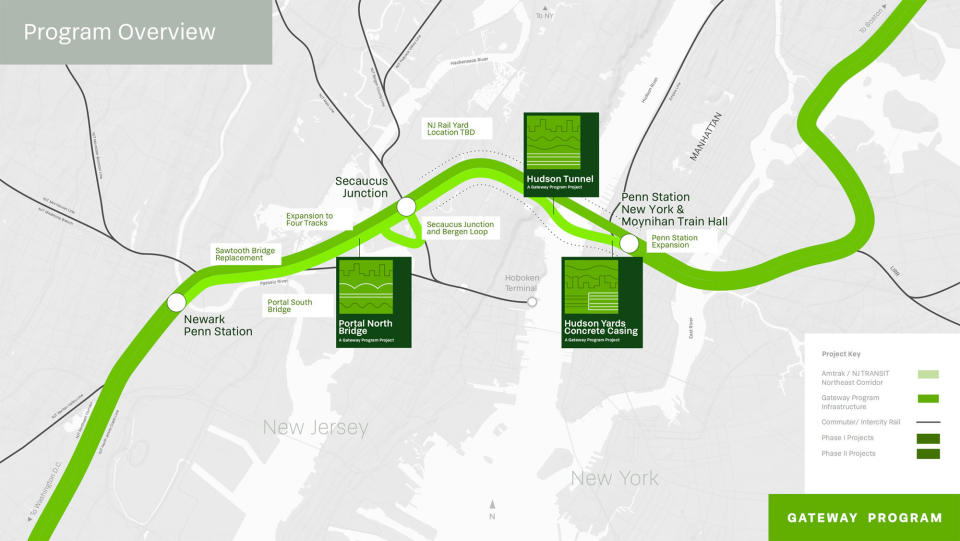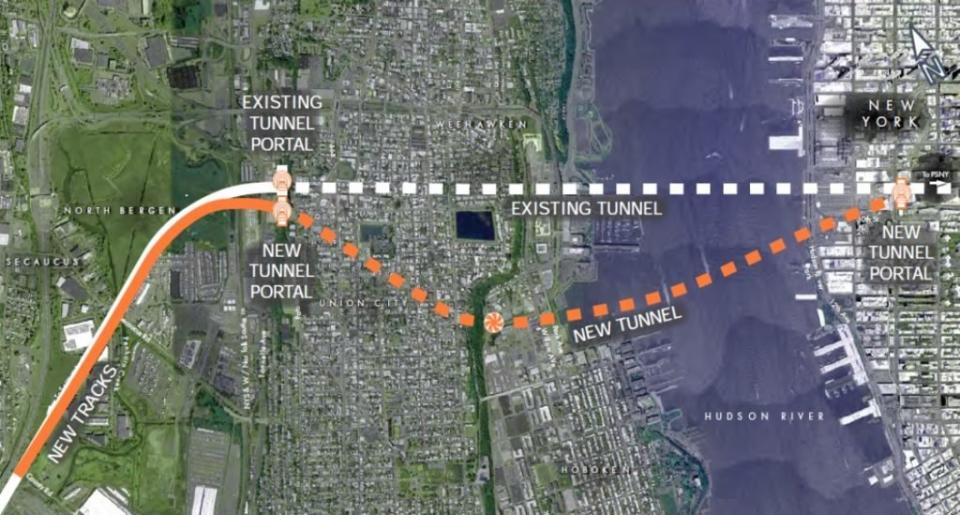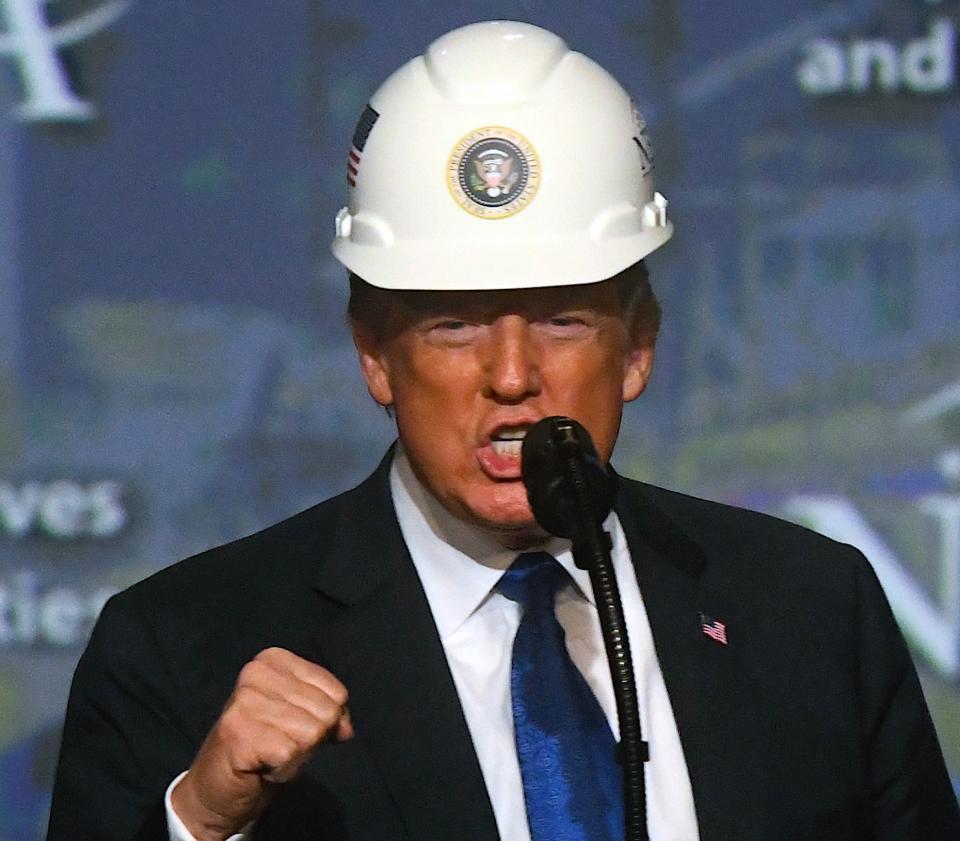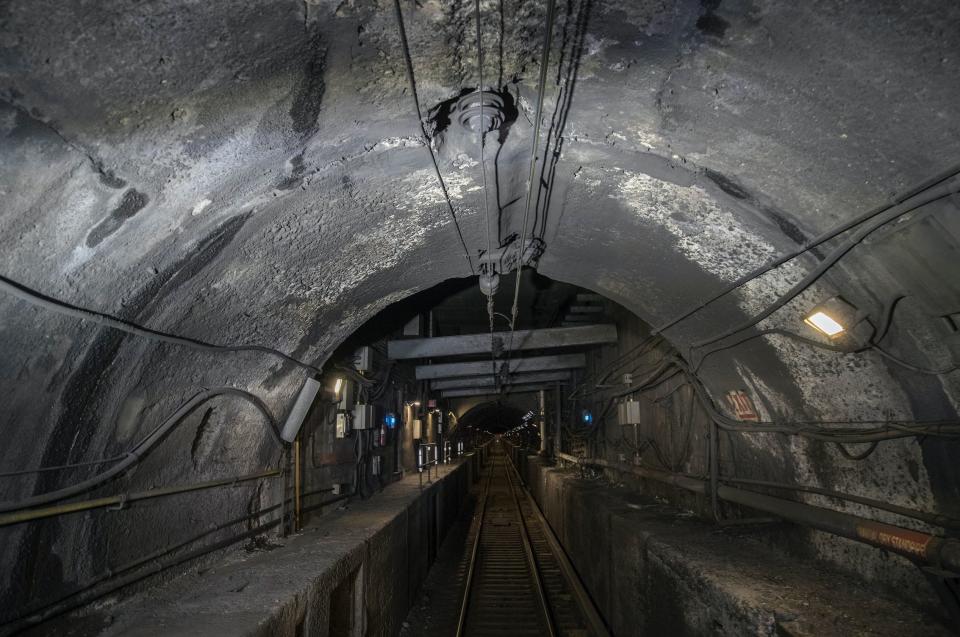The Trump administration is holding up a crucial infrastructure project
The Trump administration’s decision to withhold funding for a critical East Coast infrastructure project could cause economic trouble for the entire country.
The Gateway Program is a transportation project intended to fix the crumbling infrastructure carrying roughly 200,000 daily of commuters between New Jersey and New York through the Hudson River Tunnel. The project’s inception in 2011 arose as a means to replace the “Access to the Region’s Core” tunnel project that was canceled by then-N.J. Governor Chris Christie.
The Obama administration agreed it would cover half of the costs of the $30-billion project, with the remaining half would be split between the New York and New Jersey state governments. But the deal fell apart after Trump was elected, and according to the New York Times, the president denied there ever was an agreement.

And while the issue seems exclusive to New York and New Jersey, a recent report from the Regional Plan Association warned that a partial Hudson River Tunnel shutdown without a new tunnel “would cost the national economy $16 billion, reduce home values by $22 billion, and lead to decreased economic productivity, job losses, increased congestion, and crashes across the northeastern United States.” The Regional Plan Association is an independent, not-for-profit civic organization.
“There’s no more urgent infrastructure project in the country,” Stephen Sigmund, chief of public outreach for the Gateway Program, asserted to Yahoo Finance.
‘Everyone recognizes the need for this’
There are two key components to the Gateway Program: the Portal North Bridge and the Hudson Tunnel. The Portal North Bridge is intended to replace the current Portal Bridge “with a new, high-level, two-track fixed span.” It’s expected to help increase rail transit by approximately 11% and decrease delays.
The Hudson Tunnel would not only create a new two-track tunnel between New Jersey and Manhattan, but it would also repair the existing North River Tunnel, which sustained serious damage during Superstorm Sandy in 2012.

“Everyone recognizes the need for this, but we don’t have a partner in the administration who is willing to put the funding in to make sure that a project of national significance like this gets done,” Sigmund said.
The Trump administration’s most recent budget proposal includes no money for the project. Bloomberg recently reported, citing a Transportation Department spokesperson, that the Hudson Tunnels project "remains ineligible for federal funding because local authorities haven’t committed sufficient funds to the project." The spokesperson also asserted that the Hudson Tunnel application “has not provided documentation demonstrating that even 30 percent of the design has been completed.”
Sigmund disagreed with that assessment.
“The DoT makes an argument that these are really local projects and not national projects, but … these are projects of national significance,” he said. “And the other thing to remember is that the assets that we’re replacing, the Portal Bridge and the existing tunnel, are, in fact, federal assets. They’re owned by Amtrak.”

‘Inaction would be catastrophic’
Tackling infrastructure woes has become a major priority throughout the country. Trump himself ran for president promising “the biggest and boldest infrastructure investment in American history.”
But in September 2017, after a meeting with local officials about the Gateway project, Trump reportedly told Senate Minority Leader Chuck Schumer (D-N.Y.) that the tunnel would only happen if Democrats agreed to build the president’s border wall. After Schumer refused, the plan stalled.
“If we want economic prosperity and economic growth, we need to make sure that our transportation infrastructure, among other things, is functioning at maximum productivity and efficiency, and it’s not,” Emil Frankel, senior fellow at the Eno Center for Transportation and the former Assistant Secretary for Transportation Policy of DOT, told Yahoo Finance.
Frankel added that “we discovered on 9/11 how critical New York City is to the national economy. After all, it’s the financial center of the U.S., and remains probably the principle commercial and financial center and city in the U.S., which means that ensuring commerce, a flexible job market, and labor access are all critical to the national, regional, and local markets.”

The big hold-up lies with the White House, Sigmund asserted.
“We have enormous support for these projects from our local partners in New York, New Jersey, Port Authority, and NJ Transit, who are putting up $6 billion to get these projects built,” Sigmund said. “We have enormous support from Congress, both Republicans and Democrats, who have appropriated over a billion dollars for it. We have enormous stakeholder support.”
Several politicians from both parties have weighed on the administration’s decision to withhold funds, including New York Governor Andrew Cuomo.
“Inaction would be catastrophic, not just for the region but for the entire national economy,” Cuomo said in a statement. “The Trump administration must stop playing political games and holding this funding hostage. If the federal government refuses to fund this project, then the President will have to answer to the travelers and businesses across the Northeast who rely on this critical transit corridor.”
‘We have to be serious about fixing this’
After Hurricane Sandy hit in 2012, the head of NJ Transit stated that the superstorm caused $400 million in damages. In 2017, NJ Transit trains suffered from 236 major mechanical failures.
“It’s already too late,” Frankel said. “The tunnels are 110 years old. [Hurricane] Sandy led to flooding in the tunnels, and there’s a deterioration of basic elements of it.”

Sigmund acknowledged that we’re currently facing “a situation where the existing 108-year-old one-track-in and one-track-out system fails too often. And it already has a big impact on the economy and quality of life for people who commute every day. You’re already at risk of a shutdown in one of the tubes, which has a massive impact.”
However, he argued, “as long as we have the two tubes that are in use and have a bridge that’s in use, it’s not too late. But we have to get going. We have to be serious about fixing this.”
Adriana is an associate editor for Yahoo Finance. Follow her on Twitter @adrianambells.
READ MORE:
Follow Yahoo Finance on Twitter, Facebook, Instagram, Flipboard, SmartNews, LinkedIn, YouTube, and reddit.
